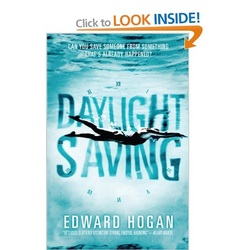
As I read my Goodreads email this morning showing stack after stack of book covers the size of my thumb, I wondered if there isn’t a better way to showcase books online beyond an image of the print cover. What innovations exist in digital book cover design?
I did some digging only to find very little out there in this space. Some reasons for this might include,
1) One cover fits all – almost all online booksellers and most importantly Amazon use a standard jpg image of the cover to market their books. Any innovation in this space would most likely need to run parallel with the standard cover or eventually be adapted by the larger booksellers.
2) Recognizable brand – using just one image to represent a book makes it easily identifiable and simple for consumers, so why try to complicate things with technology.
3) It works – I haven't seen any crowds of angry readers or consumers begging for this problem to be resolved as maybe this isn’t a problem at all.
This reminds me of the story of the suitcase that my friend Thomas Wedell-Wedellsborg described to me. The clunky wheeled-suitcase was invented in the 70s after centuries of people lugging around suitcases and yet it took another 15 or so yrs (in ’89) for designers to invent the modern rolling suitcase that we all use today. Why is that? Thomas would say because the problem wasn’t framed correctly.
So, what’s the problem with book covers?
There are simply too many covers with only small differences among genres that make it very hard for consumers to distinguish between them. Imagine if you put every single ad banner right next to each other and asked consumers to pick one to click on. This just doesn’t seem like the most effective way to sell a product, let alone a book. Most people frame the problem around increasing book sales or discovering new books, depending on the perspective of the person framing the problem. As a reader, I'm interested in making my life easier and finding great books I am going to love.
So what can be done to improve the discovery experience for consumers and engage readers with unique value propositions that go beyond the standard cover. Here are two examples I could find of publishers and authors trying out some new methods:
1. Canongate Books with Big Active have collaborated to make an interactive front cover Ruth Ozeki’s novel, A Tale for the Time Being. Check it outhere. And here's a video of the actual product in action.
I did some digging only to find very little out there in this space. Some reasons for this might include,
1) One cover fits all – almost all online booksellers and most importantly Amazon use a standard jpg image of the cover to market their books. Any innovation in this space would most likely need to run parallel with the standard cover or eventually be adapted by the larger booksellers.
2) Recognizable brand – using just one image to represent a book makes it easily identifiable and simple for consumers, so why try to complicate things with technology.
3) It works – I haven't seen any crowds of angry readers or consumers begging for this problem to be resolved as maybe this isn’t a problem at all.
This reminds me of the story of the suitcase that my friend Thomas Wedell-Wedellsborg described to me. The clunky wheeled-suitcase was invented in the 70s after centuries of people lugging around suitcases and yet it took another 15 or so yrs (in ’89) for designers to invent the modern rolling suitcase that we all use today. Why is that? Thomas would say because the problem wasn’t framed correctly.
So, what’s the problem with book covers?
There are simply too many covers with only small differences among genres that make it very hard for consumers to distinguish between them. Imagine if you put every single ad banner right next to each other and asked consumers to pick one to click on. This just doesn’t seem like the most effective way to sell a product, let alone a book. Most people frame the problem around increasing book sales or discovering new books, depending on the perspective of the person framing the problem. As a reader, I'm interested in making my life easier and finding great books I am going to love.
So what can be done to improve the discovery experience for consumers and engage readers with unique value propositions that go beyond the standard cover. Here are two examples I could find of publishers and authors trying out some new methods:
1. Canongate Books with Big Active have collaborated to make an interactive front cover Ruth Ozeki’s novel, A Tale for the Time Being. Check it outhere. And here's a video of the actual product in action.
Another, though slightly less interactive and older, example is:
2. Walker Books created an interactive cover for Daylight Savings by Edward Hogan. Check it out here. I tried to embed it here but I wasn't able to copy/paste the code.
From only a quick search, I wasn't able to find much innovation in this space, which I think could use some. If you have come across some cool new experiments in this space, please share some with me as I'm keen to see more.
And to read more about innovation, check out Thomas’ new book Innovation as Usual published this March 2013.
2. Walker Books created an interactive cover for Daylight Savings by Edward Hogan. Check it out here. I tried to embed it here but I wasn't able to copy/paste the code.
From only a quick search, I wasn't able to find much innovation in this space, which I think could use some. If you have come across some cool new experiments in this space, please share some with me as I'm keen to see more.
And to read more about innovation, check out Thomas’ new book Innovation as Usual published this March 2013.
 RSS Feed
RSS Feed